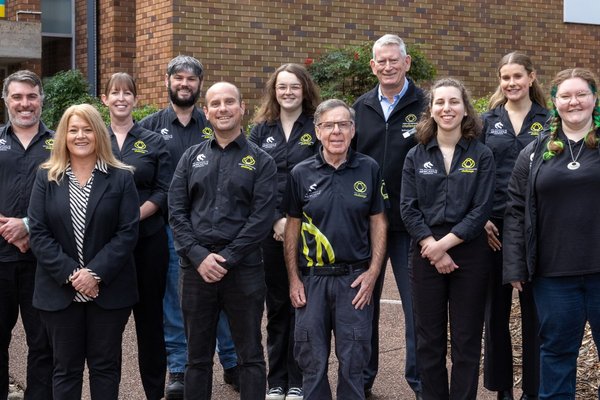Science in the Underworld: a cave experience for students
Limestone caves are a great natural laboratory for observing how geological processes work.
I have just been involved in an exciting science outreach program for High School students, called “Science in the Caves”, accompanying a class of keen students from Nepean High School on a tour of Jenolan Caves. This cave experience adds real-life background to classroom studies and makes the science of caves come alive for the students.
The Jenolan Caves, 182 km west of Sydney in the Greater Blue Mountains World Heritage Area, are in folded Silurian Limestone. They have developed on the northern and southern sides of the Grand Arch, a natural tunnel cutting the limestone. Ever since their discovery by Europeans after 1838, the cave decorations (speleothems) have been admired for their beauty and variety.
The program teaches students about the geology and ecology of the Jenolan Caves Karst Reserve, with guidance from cave specialists. The students were shown around by Jenolan Caves Guides and Australian Museum Research Institute (AMRI) staff as we looked at rocks, fossils and cave decorations and talked about how they formed.
I accompanied the group as AMRI’s cave mineral expert, with Guide Anne Musser, a Palaeontologist and AMRI Research Associate, who talked about the fossils. We viewed the Carlotta Arch, a remnant of a former high-level cave fringed with stalactites, which frames a view of the Blue Lake down below in the valley, and the impressive Devil’s Coach House with its living stromatolites formed by cyanobacteria (blue-green algae).
Finally, we had a tour through the Chifley Cave led by the Manager of Cave Operations, Peter Walsh, where I had an opportunity to point out rare phosphate minerals in a chamber called Katie’s Bower. Here I talked about how the minerals formed, and described the X-ray equipment we use to analyse and identify them. These minerals resulted from a chemical reaction between limestone, clay, and acidic breakdown products of ancient bat guano from the bent-wing bat Miniopterus schreibersii.
As I have studied Jenolan Caves minerals for over 25 years, I was well-placed to give the students up-to-date results from recent research, so they were given information they could not have found from other sources.
The students and their teacher appreciated this unique opportunity to hear about current cave mineral research from a real cave mineral scientist, in the cave where he is working. And who knows, perhaps I have inspired some of the students to take up geology as a future career!
Dr Ross Pogson,
Collection Manager, Geosciences
More Information:
Pogson, R.E., Osborne, R.A.L. and D.M. Colchester (2014). Minerals of Jenolan Caves, New South Wales, Australia: Geological and Biological Interactions. Proceedings of the Linnean Society of New South Wales, 136, 1-18.
Acknowledgements:
- This program was organised jointly with the Australian Museum and the Jenolan Caves Reserve Trust.
- The cave mineral research is being conducted jointly with A/Prof Armstrong Osborne, Faculty of Education and Social Work, University of Sydney and David Colchester, Research Associate, Australian Museum.










